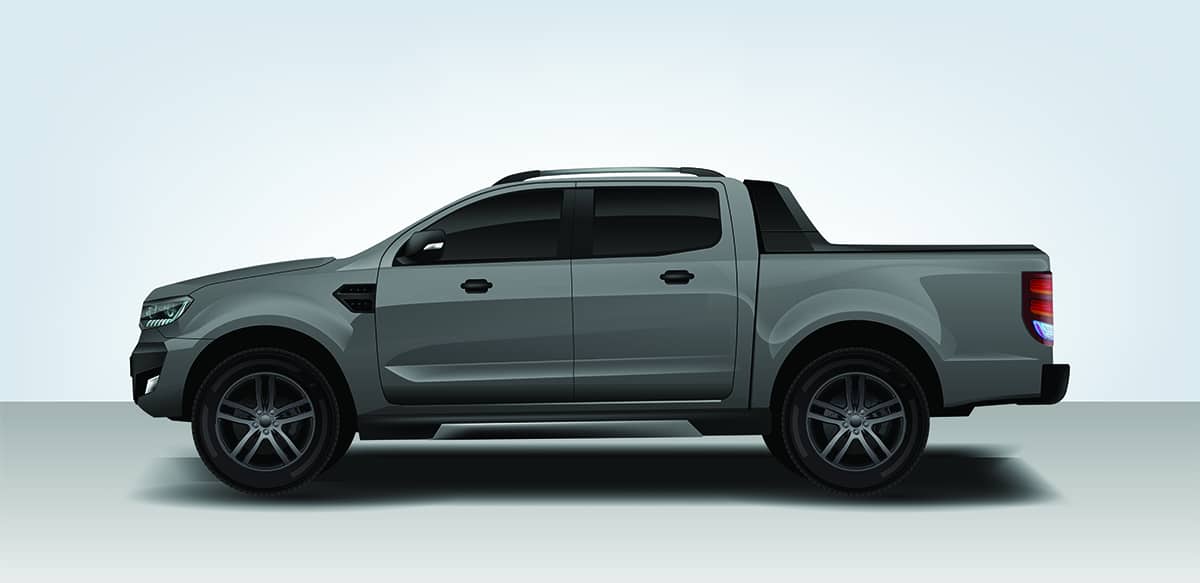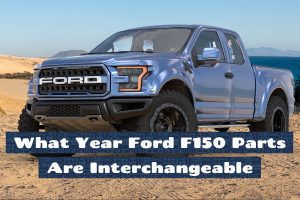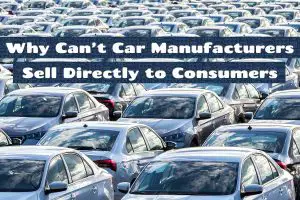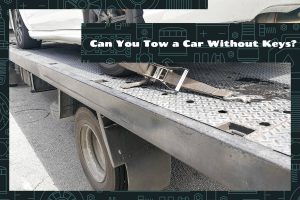As a potential buyer or owner of a Ford V10-powered vehicle, it is essential to know which years had the best performance and which ones had significant issues. This knowledge will help you make informed decisions when purchasing a vehicle or maintaining your current one.
The best years for the Ford V10 are 2001, 2005-2007, and 2008-2010. The worst years are 1997-1999, 2000, and 2011-2013.
Today, we’ll talk about the basics of the Ford V10, what makes these model years so good (and bad), and how the Ford V10 compares to other popular Ford engines.
An Overview of the Ford V10 Engine
The Ford V10 engine first made its appearance in 1997 as part of Ford’s modular engine family. It was designed to offer a powerful and reliable option for larger trucks and recreational vehicles and quickly gained popularity among consumers.
Over the years, Ford has made several updates and improvements to the V10 engine, resulting in some years being better than others in terms of performance, reliability, and overall satisfaction.
The Ford V10 engine is a 6.8-liter gasoline engine with a unique 10-cylinder configuration. It was designed as an alternative to the V8 engine for consumers who needed more power and torque for heavy-duty applications like towing and hauling. The V10 engine’s design provides a smooth and efficient power delivery, making it a popular choice for larger trucks, vans, and motorhomes.
Ford V10 Engine Specs
The Ford V10 engine has seen several variations throughout its production life, with each generation offering improvements in power, torque, and efficiency. The engine features a 90-degree V-angle with a single overhead camshaft (SOHC) design, which allows for better valve timing and increased power output.
In its initial release, the V10 engine produced around 275 horsepower and 410 lbs.-ft. of torque. Over the years, these numbers have increased, with the latest versions boasting up to 362 horsepower and 457 lbs.-ft. of torque. Additionally, Ford has made strides in improving the V10’s fuel efficiency, though it still lags behind smaller engines in this regard.
The Best Years for Ford V10
As previously indicated, not all Ford V10 engines were created equally. Here, we’ll briefly go over the best model years for this popular Ford engine.
2001: Improved Performance
In 2001, Ford introduced the second generation of the V10 engine, featuring several upgrades and enhancements. This generation provided significant improvements in power, torque, and overall performance compared to the original version.
Some of the most notable upgrades in the 2001 V10 engine include an increased displacement from 6.8L to 7.3L, a redesigned cylinder head, and a higher compression ratio. These changes contributed to an increase in horsepower and torque, making the 2001 model a popular choice among Ford enthusiasts.
2005-2007: Best Overall Performance and Reliability
Between 2005 and 2007, Ford made substantial improvements to the V10 engine with the introduction of the 3-valve design. This new design featured three valves per cylinder (two intake valves and one exhaust valve), which allowed for better airflow and more efficient combustion.
The 3-valve V10 engine provided significant gains in power, torque, and fuel efficiency compared to its predecessors. Horsepower increased to approximately 362, while torque reached 457 lbs.-ft., making these years the best in terms of overall performance and reliability. Additionally, the 3-valve design contributed to improved fuel economy, although the V10 still consumed more fuel than smaller engines.
2008-2010: Improved Emissions and Fuel Economy
In response to stricter emissions regulations, Ford introduced emissions-compliant V10 engines between 2008 and 2010. These engines featured advanced technology, such as a more efficient catalytic converter and exhaust gas recirculation, to reduce harmful emissions.
The emissions-compliant engines not only helped protect the environment but also provided benefits to consumers. These engines maintained the powerful performance of the V10 while offering improved fuel economy and lower emissions, resulting in a more eco-friendly and cost-effective option for buyers.
The Worst Years for Ford V10
Now, let’s see what years Ford dropped the ball with the V10 engine.
1997-1999: Early Reliability Issues
The first generation of the Ford V10, produced between 1997 and 1999, was plagued with reliability issues. Common problems included faulty spark plugs, ignition coil failures, and issues with the exhaust manifold, which often led to costly repairs.
During this period, Ford issued several recalls related to the V10 engine, further tarnishing its reputation. Many consumers lodged complaints about the engine’s reliability, contributing to a negative perception of the early V10 models.
2000: Transition Year Issues
In 2000, Ford made some updates to the V10 engine, but these changes were not enough to address the ongoing reliability concerns. While some improvements were made in terms of performance, the 2000 model year still experienced issues similar to the earlier models.
The 2000 model year V10 continued to suffer from reliability problems, such as spark plug and ignition coil failures, which led to consumer dissatisfaction and a negative perception of the engine.
2011-2013: Quality Control Problems
Between 2011 and 2013, Ford faced quality control issues with the V10 engine. These issues resulted in manufacturing defects and subsequent recalls, which impacted the engine’s overall reputation.
The quality control problems during these years The quality control problems during these years negatively affected consumer satisfaction, as the manufacturing defects and recalls led to a decline in confidence in the V10 engine.
Many buyers experienced frustration with the need for frequent repairs and the inconvenience of dealing with recalls. As a result, these years are considered some of the worst for the Ford V10 engine in terms of overall satisfaction and reliability.
Comparing Ford V10 to Other Ford Engines
The V10 isn’t the only noteworthy Ford engine. Here, we’re going to see how the V10 compares to the V8 and EcoBoost engines.
Ford V8 vs. V10
The Ford V10 is often compared to its V8 counterpart, as both engines are designed for use in larger trucks and heavy-duty applications. The V10 engine generally offers more power and torque compared to the V8, making it an ideal choice for those who require additional towing or hauling capabilities. However, the V8 engine typically has better fuel economy and is often considered more affordable in terms of maintenance and repair costs.
Ford EcoBoost engines
Ford’s EcoBoost engines are another popular choice, particularly for those who prioritize fuel efficiency and environmental impact. These engines utilize turbocharging and direct fuel injection technology to deliver impressive power and torque while maintaining excellent fuel economy.
While the EcoBoost engines may not provide the same level of raw power as the V10, they are a more fuel-efficient and environmentally friendly option for those who don’t require the additional capabilities offered by the V10 engine.
Ford V10 in RVs
The Ford V10 engine has become a popular choice for use in recreational vehicles (RVs) due to several benefits that make it well-suited for this application:
1. Power and torque
The V10 engine provides ample power and torque, which is essential for moving large and heavy RVs with ease. This increased performance allows RV owners to maintain comfortable cruising speeds, even when towing additional vehicles or navigating steep inclines.
2. Reliability
In its best years, the Ford V10 engine is known for its durability and reliability, which is crucial for RV owners who want to avoid unexpected breakdowns during their travels. A well-maintained V10 engine can last for hundreds of thousands of miles, making it a suitable choice for long-term RV ownership.
3. Availability of parts and service
Due to its widespread use in various Ford vehicles, replacement parts and service for the V10 engine are readily available. This accessibility ensures that RV owners can easily find the necessary components and expertise for repairs and maintenance, even when traveling far from home.
FAQs
1. How much horsepower does a Ford V10 have?
The horsepower of a Ford V10 engine varies depending on the model year and configuration. Early models produced around 275 horsepower, while later 3-valve versions generated up to 362 horsepower.
2. What are the most common issues with Ford V10 engines?
Common issues with Ford V10 engines include faulty spark plugs, ignition coil failures, and exhaust manifold problems. These issues were particularly prevalent in the first generation of V10 engines produced between 1997 and 1999.
3. How many miles can a Ford V10 engine last?
The longevity of a Ford V10 engine depends on factors such as maintenance, driving habits, and overall vehicle condition. With proper care and maintenance, a Ford V10 engine can last over 200,000 miles or even more.
4. What is the towing capacity of a vehicle equipped with a Ford V10 engine?
The towing capacity of a vehicle with a Ford V10 engine depends on the specific vehicle model, configuration, and options. However, V10-equipped vehicles generally offer impressive towing capabilities, with some models capable of towing up to 15,000 pounds or more (PDF).
5. Is the Ford V10 engine still being produced?
The V10 engine saw the last of its days back in 2019, as it was replaced by the 2-valve 6.2L V8 engine.






